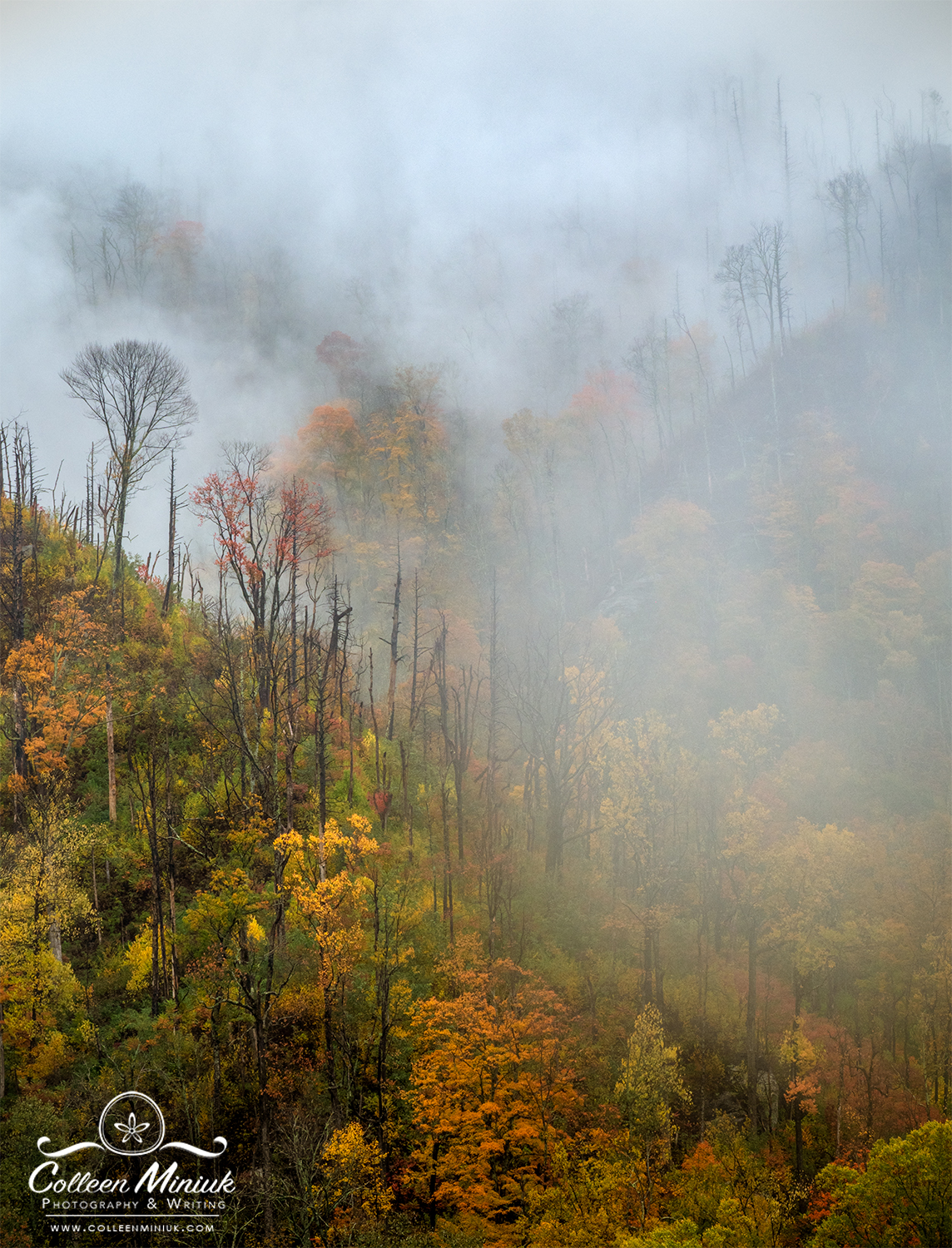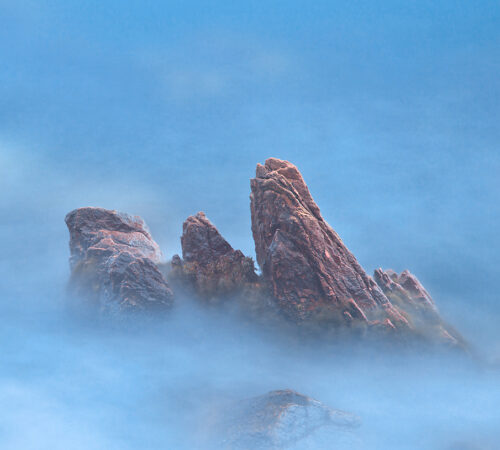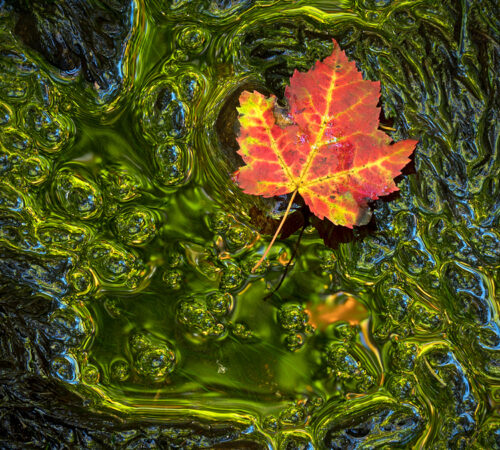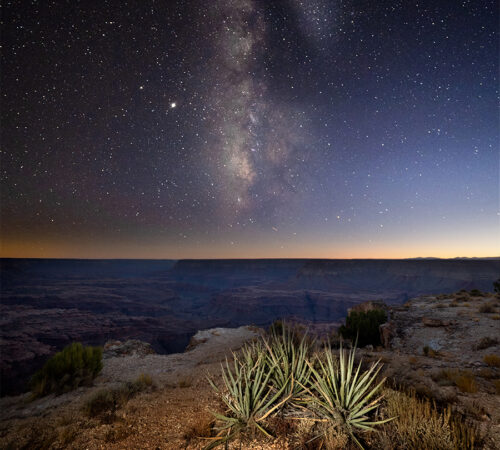Bring It All

Dear Bubbles:
What lens should I bring to [insert any location]?
~Every photographer at one point in their life
Dear Every photographer at one point in their life,
Easy! You should absolutely bring the lens that most closely resembles the size of the Hubble Space Telescope to every photographic outing you go on. Riiiiight….
I get this question all the time on my photography workshops, both before the trip starts and before we head out into the field. Every time I hear it, I must admit, I cringe a little bit. I so, so, so want to give you a direct answer as to what you should put in your camera bag when we go out to explore. It’d be so simple to tell you to always bring your wide-angle lens or the lens with the widest aperture or the fancy new lens you got for your birthday.
But I just can’t do it.
I can’t because giving you a definitive answer misleads you. Choosing a lens before connecting with the landscape and defining your vision limits you and your creativity unnecessarily. It makes you a slave to the gear when the gear should be supporting you in satisfying your creative intentions and expressions. I define my visual message first, then I pick the best gear to get the job done.
I can’t because I have no idea what you will experience “out there,” what message you will wish to convey once you do, and how you will want to frame that message in a photograph. I’m good at a lot of things. Busting out in spontaneous dance moves. Photographing bubbles. Mind-reading ain’t one of them. Rest assured, I am working on developing such skills. I wouldn’t hold your breath, though. In the meantime, only you can know the best answer for yourself.
How to go about deciding? Let’s talk through some possible approaches:
1. Bring all the lenses you have. Have all your tools at your disposal. Give yourself the space for any and all possibilities to materialize with your creative vision. Then pick the right lens to support the delivery of your visual expression. Boom! Problem solved.
What typically prevents people from choosing this option is weight. Weight matters especially for those who do any sort of wandering. I mean, how excited are you going to be to make a photograph when your knees, back, and/or neck are screaming at you? Wait, don’t tell me! I’m mind-reading…I’m mind-reading…and the answer is: you won’t be excited at all.
There are two ways to address this: lighten the load and/or get physically stronger. I do both. I spent hours researching the weight of different cameras systems, down to how much a battery and cable release weighed, before purchasing my gear. (Read how I reduced the weight of my set-up at “Switching Gear.”) I know you have a lot of money invested in your DSLR system already. I know you don’t want to learn a new menu system. But what’s worse? Saving your pennies, a little temporary mental discomfort, or physical pain? Don’t struggle with a system that makes you work. Find a system that works for you.
I also prioritize my health so that I can stay physically capable of leading an active lifestyle for as long as my body will allow it. I know that won’t be forever. For now, I hike, paddleboard, row, dance, and make sand angels. I enjoy these activities, but I also know they’ll enable me to go farther and see more with less suffering out in the field with my camera gear in tow. As my dad says, “If you stop moving, you’ll rust.” Even a short walk around the block at home can make a world of difference. But so can knowing your own situation and understanding how far you can push it with the weight of your gear on your shoulders.
2. Bring only one lens. Some photographers deliberately chose to bring a single lens out in the field as a challenge. I fully support the idea of learning how to use the equipment you bring and knowing when to apply what type of gear and how to use it. After all, you don’t want to be fumbling around with choosing a lens when the jaguar runs under the double rainbow right in front of you. Before that happens, know your lens’ capabilities and limitations (e.g., how close you can get to an object before you cannot focus close anymore; perspective; distortion; maximum and minimum apertures; maximum depth of field; diameter of lens so you know which filter fits which lens).
The risk of relying upon a single lens, typically a favorite one or one you’re most comfortable in using, is that we can fall back on our habits quickly. Shooting with the same gear can result in successful images with consistency. But in time, you may tire of seeing the same perspective over and over and over. (I did. I about gave up on photography in 2013 after tapping into my wide-angle lens almost exclusively for years…)
In this sense then, if you are to choose only one lens, don’t bring your “go to” lens. Bring your least favorite or your least understood. Expand your toolbox. But refrain from getting frustrated if you experience something in the field that requires a different lens. Murphy’s Law suggests the lens you don’t bring will be the one you inevitably need as soon as you arrive. Which brings us back to the first option: bring it all!
Trying to pick one lens out of your arsenal may also lead to analysis paralysis. Science suggests we can—and do—get stuck in what’s called “The Paradox of Choice” as the number of possibilities increases. As the Decision Lab wrote: “…while we might believe that being presented with multiple options actually makes it easier to choose one that we are happy with, and thus increases consumer satisfaction, having an abundance of options actually requires more effort to make a decision and can leave us feeling unsatisfied with our choice.”
I only have three lenses in my bag at all times: a 7-14mm wide-angle, a 14-150mm, and a 60mm macro. I occasionally slip my heavier 300mm fixed lens when hiking shorter distances. This gives me the equivalent of a 14-600mm range in 35mm speak. While I know there are other specialty, prime, and fancy lenses out there, I can get everything I need out of these 3 to 4 lenses whether I’m photographing broad landscapes, small macro scenes, birds, the night sky, and more.
But if someone gave me a million dollars to pick one to photograph with for the rest of my life, I’d choose my 7-14mm lens because it’s how I naturally see the world. But if a great deal of stand-up paddleboarding would be involved—which, of course, it would—I’d change my answer to my 14-150mm lens because it would offer me the broadest amount of perspectives. But what if I see bubbles in the water along the way?! I’d have to have my macro lens…See, I just picked three. I can’t even pick one with a hypothetical million bucks on the line. Just. Bring. It. All.
3. Bring the one that matches what you think might match what you’ll see at a location. This option is the most dangerous one. Even if you have experience with a particular place, going in with expectations will limit you to see only what you want to you see. In doing so, you’ll miss the infinite amount of possibilities present in your current moment.
Besides, how you do you really know what you’ll see? What we experience and perceive is based on expectations, mental capacity, stress, etc. While we the rocks and trees do not often change significantly in between our visits, light, weather, seasons, time of day, tides, etc. do and can transform our interpretations of scenes from visit to visit. If you are approaching your landscapes with shoshin—pretending as if you’ve never seen something before even if you have—and mushin—without preconceived expectations or judgments—then picking a lens based on what you think you’ll see isn’t a viable path. Since you’ll want to be ready for any and all opportunities, refer back to the first option: bring it all.
4. Don’t bring a lens at all. Yep, I said it. Think about it: how many sunrises or sunsets have you actually witnessed with your own two eyes, fully present, while NOT looking through a viewfinder? Instead of bringing all your lenses, what if you brought all your attention to fleeting moments of incredible awe and beauty around you, ones that remind you why you’re a photographer in the first place and offer peace and stillness so absent in our bustling world today?
“But Bubbles, what if I see an amazing shot while I’m watching a sunrise, and all I have is my iPhone?” Then make the photograph with your iPhone. It is said that the best camera (and lens) to use is the one you have with you.
“But Bubbles, what if I see an amazing shot while I’m watching a sunrise, and I don’t have any cameras with me?” Then record the photograph to the memory card in your brain. You’ll live even if you don’t make a photograph. I promise.
My buddy and fellow photographer Guy Tal and I have come to agree that the value of a photograph has already been achieved by the time you click the shutter. Did you get into photography because you fell in love with the outdoors? Because you enjoyed discovering new ideas about the world, yourself, and the people around you? Or because you’ve always dreamed of carrying 17 lenses and clicking a shutter button, only to have many of those images collect dust on a hard drive?
Whether you set out with a camera bag on your back or not, embracing an autotelic approach, one where you’re enjoying the moment for the sake of the moment and not focusing your mental energy on getting results (i.e. making photographs) can yield an even richer experience and ultimately, a richer life. Instead of worrying about which lens to bring, bring that which you already have, is free, and weighs nothing: your current set of raw materials which includes your knowledge, perceptions, interests, memories, curiosities, and passions. In other words, bring it all—all of you.
Be well, be wild,
Bubbles
Have a question about photography, art, and/or the creative life? Need some advice? Looking for inspiration? Send your question to Dear Bubbles at colleen@colleenminiuk.com to be possibly featured in a future column post. (If you’d prefer a different display name than your real first name, please include your preferred nickname in your note.




